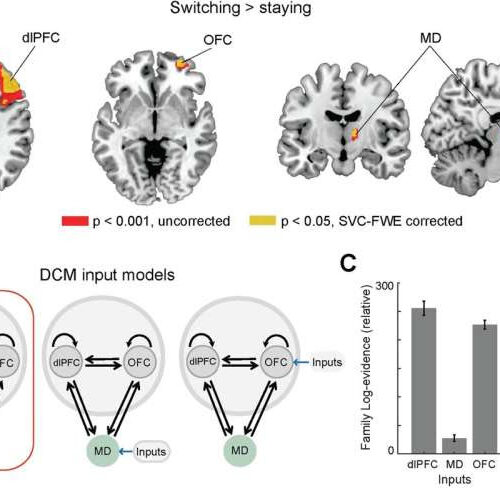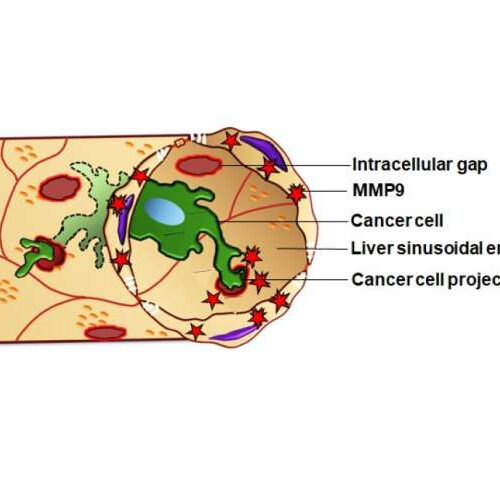by University of California, Los Angeles Credit: Pixabay/CC0 Public Domain Scientists are still trying to understand why many breast cancer survivors experience troubling cognitive problems for years after treatment. Inflammation is one possible culprit. A new long-term study of older breast cancer survivors published today in the Journal of Clinical Oncologyand co-led by UCLA researchers adds important...
Human Brain Project researchers identify new marker of ALS outcome
by Roberto Inchingolo, Human Brain Project Equipment used in the study. Credit: Arianna Polverino, University Parthenope, Naples A study by Human Brain Project (HBP) researchers has identified a new marker for predicting the clinical outcome of patients with Amyotrophic Lateral Sclerosis (ALS) through magnetoencephalography. This marker can be measured in the brain during its resting...
Combining time-restricted eating and HIIT improves health measures in women with obesity
by Cell Press Credit: Unsplash/CC0 Public Domain Both time-restricted eating (TRE) and high-intensity interval training (HIIT) have been shown to improve cardiometabolic health in people who are overweight and at risk of serious disease. Now a randomized, controlled trial has tested whether combining these two approaches is more effective than either of them on their...
Eating late increases hunger, decreases calories burned, and changes fat tissue
by Brigham and Women’s Hospital Credit: Pixabay/CC0 Public Domain Obesity afflicts approximately 42 percent of the U.S. adult population and contributes to the onset of chronic diseases, including diabetes, cancer, and other conditions. While popular healthy diet mantras advise against midnight snacking, few studies have comprehensively investigated the simultaneous effects of late eating on the...
Prenatal acetaminophen use linked to sleep, attention problems in preschoolers
by Zach Sweger, Pennsylvania State University Study population. Credit: PLOS ONE (2022). DOI: 10.1371/journal.pone.0272593 Acetaminophen use during pregnancy is associated with sleep and behavior problems consistent with attention deficit hyperactivity disorder (ADHD), according to a study by Penn State College of Medicine researchers. Acetaminophen is a common drug used to treat a variety of issues, including fever,...
Specialized smart soft contact lenses can address global issue of glaucoma diagnosis, management
by Matthew Oates, Purdue University New smart soft contact lens technology developed by a multidisciplinary team of engineers and health care researchers at Purdue University and Indiana University School of Optometry looks to gather important intraocular pressure measurements for 24-hour cycles as a way to detect glaucoma. Credit: Purdue University photo/Rebecca McElhoe The vision of...
Investigating rare genetic mutations led scientists to surprising blood pressure discovery
by University of Pittsburgh Credit: Pixabay/CC0 Public Domain The kidneys are often the unsung heroes in maintaining healthy blood pressure, filtering 180 liters of fluid and a pound of salt every day to keep levels in check. But new research by University of Pittsburgh geneticists and nephrologists shows that, surprisingly, a cellular channel outside the...
Expert offers perspective on experimental Alzheimer’s disease drug
by Deb Balzer Credit: Pixabay/CC0 Public Domain According to drugmakers Eisai and Biogen, a Phase 3 clinical study on a potential new Alzheimer’s disease drug shows promise. The study findings show that the drug, lecanemab, reduced clinical decline of people with Alzheimer’s disease by 27% compared with a placebo after 18 months of treatment. “This...
Mouse-human comparison reveals unexpected functions of the thalamus
by Ruhr-Universitaet-Bochum Human fMRI confirms the dlPFC, not OFC or MD, receives the driving sensory input. A. Strategy switching (Switching>Staying) entailed significant activity in right dlPFC, right OFC and right MD; here projected on axial, coronal and sagittal MRI brain slices. Brain activations displayed at p < 0.001 (uncorrected, red) and p < 0.05 (whole...
Study finds the mechanism used by metastatic cancer cells to infiltrate the liver
by ResearchSEA The liver sinusoidal endothelial cells (LSECs, beige) surround a blood vessel containing a cancer cell (green). The cancer cell is able to induce the formation of intracellular gaps (iGaps, red), through inducing MMP9. Credit: Matsubara, Osaka Metropolitan University Metastasis—when cancer spreads to form new tumors—causes approximately 90% of cancer-related deaths. Because metastatic cancer...










